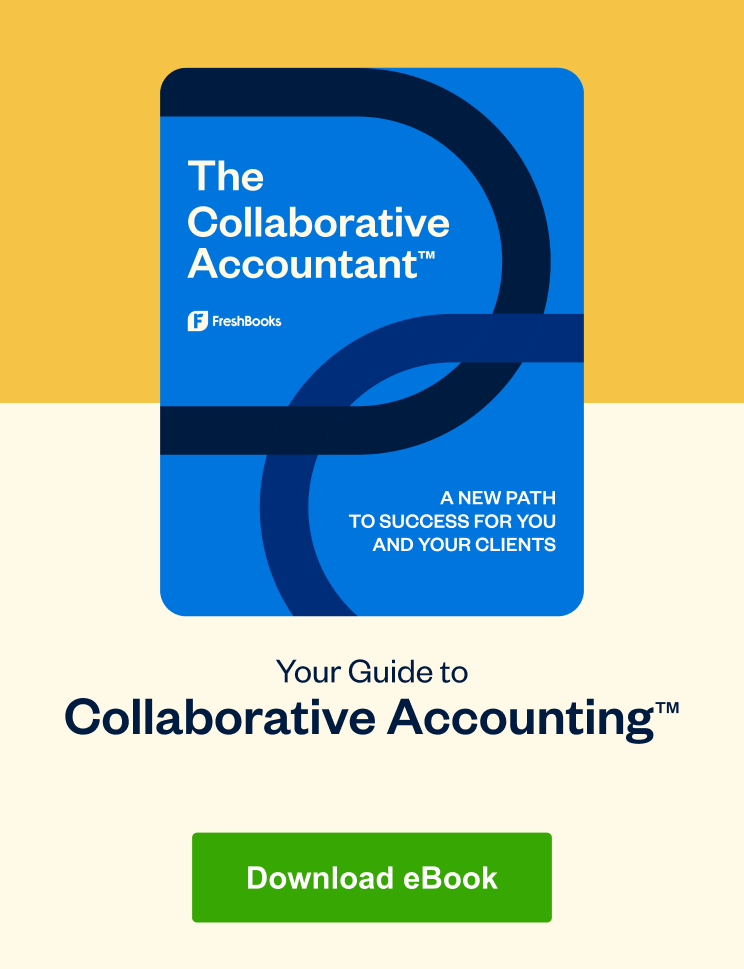Get tips on staying motivated, focused, and productive during the busy season from FreshBooks Accounting Partners.

Like any relationship, the one between accounting professional and client requires mutual respect, honesty, and open communication. Establishing that strong partnership begins with laying the groundwork for regular, transparent connections.
Here are 7 steps to consider as you create a communications strategy for your valued clients.
Table of Contents
1. Define Expectations
At the outset of your relationship, create a document that outlines your process and the terms of your engagement. Be clear about things like:
-
- Who is responsible for which accounting tasks?
- When you will need specific information, e.g. documents ahead of tax season
- How will you share financial insights?
- How often will you meet?
- An overview of the kinds of things you’ll discuss when you meet
If you’re using the FreshBooks Collaborative Accounting™ model, onboarding is the perfect time to introduce a collaborative workflow that empowers your clients to take responsibility for the pre-accounting tasks. This onboarding will give them more insight into their day-to-day business operations while enabling you to provide high-level advisory services.
2. Set Boundaries
Accountant Megan Justice, owner of Crayon Advisory, establishes clear communication boundaries with her clients to ensure mutual expectations are understood and maintained throughout their partnership.
She affirms these boundaries by having key information available on a client portal and providing timely links in an email auto-response.
“My general formula for my auto-responder is:
- What do clients most need to know right now? This might include an upcoming due date or approximate status of what I’m working on/through.
- What question(s) am I bombarded with lately?
- Remind clients to go to the portal.
- Remind clients books need to be reconciled, and transactions need to be categorized before I can do anything (and that I need statements if I’m the one doing it).
- Remind clients there are no tax emergencies.”
Although she encourages clients to ask her questions at any time, she finds the auto-responder and the library of frequently asked questions are effective ways for them to serve themselves.
“This year, I added in a Tax Season FAQ with the intention of keeping a link to that in my auto-responder. It keeps my autoresponder a little bit shorter and still gives clients access to the most commonly requested information, so we’re speaking the same language. When I use these tools to set and remind them of boundaries, I can stay focused on getting work done and providing quality service to my clients.”
3. Understand How Your Clients Like to Communicate
Communications preferences vary across industries, workplaces, and personalities. While some people live in Slack or their inbox all day long, others are more reachable by text or phone. It’s important to understand how each of your clients likes to connect from the outset so you can tailor your communications to the way they work.
In addition to managing communication logistics, take the time to understand each client’s needs, expectations, preferences, and values. This insight will help you tailor your messages and choose the appropriate channel of communication if they don’t initially state a preference.
Investing time in this upfront will also enhance your rapport-building efforts and bolster your credibility.
4. Set the Right Tone
No matter how you and your clients choose to connect, it’s helpful to be intentional about the tone of your communications. As an advisor, you can build trust by demonstrating a friendly and open nature that invites questions and concerns.
In our Collaborative Accounting certification, we offer 3 principles of a collaborative conversation:
- Be curious: Ask open questions and use open statements that help your clients articulate their thoughts, concerns, pain points, and wins.
- How would you…?
- Tell me more…
- Provide space: Leave room in the conversation for your clients to think about and respond to your questions. Listen carefully and reflect back to them what you heard so you can verify that your interpretation is correct.
- Let me play that back to you…
- So what I’m hearing is…
- Share responsibility: Avoid simply telling clients what to do. Instead, raise awareness of strategies and tools that can increase efficiency. Educate them on the benefits of different approaches, and make suggestions based on your experience and insights.
- Do you know about this tool…?
- What do you think about doing…?
5. Establish a Communications Schedule
Many accounting professionals like to set up recurring meetings with their clients to ensure consistent touchpoints. Without an agreed-upon cadence of meetings, it’s easy to fall into the rhythms of your own workflows and miss key moments to connect. Often, this results in losing opportunities to make real-time insights that can inform critical business decisions.
Establishing a consistent communication schedule could involve scheduling a meeting on the last Monday of every month or quarter. Or, if schedules fluctuate, you might touch base at the start of each month to schedule a mutually convenient time in the following weeks. Since you already know how your clients like to communicate, you’ll know who wants a phone call, who wants a text, and who prefers a Zoom invite or an email.
6. Use Technology to Automate Communications
There are many ways to streamline communications with your clients. Consider tech tools and apps that will help you get in touch, stay connected, and schedule meetings quickly and easily.
Some helpful apps that integrate with FreshBooks include:
- Acuity: Automate your client bookings, cancellations, reminders, and payments.
- Google Calendar: Send meeting invitations and sync appointment data with FreshBooks for easy time tracking and invoicing.
- Calendly: Allow your clients to see your availability and self-book.
7. Be Relevant, Clear, and Concise
With the volume of emails, texts, and other communications we all get every day, your clients need to know that when they receive a message from you, it contains pertinent information they require—and nothing more.
Whether you’re popping into an individual’s inbox with a quick check-in or sending a quarterly newsletter to all of your clients, it’s critical to be clear and concise. After all, business owners tend to receive a lot of information, so you want to cut to the chase and prioritize delivering clear and relevant information.
Some tips on being concise in email or other messages:
- Make your text scannable by avoiding long sentences and dense paragraphs.
- Use bullet points and keep them short.
- Add bold text as a headline to highlight a paragraph.
If you find yourself sending the same type of communications to various clients, you might consider writing templates that you can tailor. If you’re looking to receive clear, concise, and relevant information, consider sharing pre-set templates for your clients to fill out and submit by email or upload to your client portal. This can cut down on the time it takes to sift through unnecessary information.
Build Strong Client Relationships with Effective Communications
Establishing a seamless and stress-free channel of communication tailored to each of your valued clients may seem like an effort at the outset, but it will quickly become a process just like any other. Creating a repeatable communications procedure will help ensure both you and your clients get the information you need at the right time and in the right way while positioning you as a trusted advisor.

Written by Heather Hudson, Freelance Contributor
Posted on April 2, 2024
 Accountants: What Is the Best FreshBooks Plan for Your Client?
Accountants: What Is the Best FreshBooks Plan for Your Client? 5 Ways to Work Better With Your Clients in FreshBooks, for Accountants
5 Ways to Work Better With Your Clients in FreshBooks, for Accountants Everything You Need to Supercharge Your Firm’s Accounting Workflow
Everything You Need to Supercharge Your Firm’s Accounting Workflow






